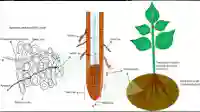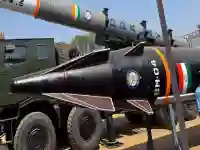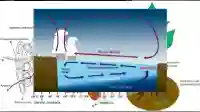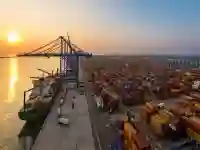
Jallianwala Bagh Massacre: A Defining Moment in India’s Fight for Freedom
On April 13, 1919, British troops under General Reginald Dyer unleashed ruthless gunfire upon an unarmed gathering at Jallianwala Bagh, Amritsar, protesting against oppressive colonial policies. With no escape, hundreds perished, while over 1,500 were injured, making it a tragic milestone in India’s history. The brutality ignited national outrage, strengthening the independence movement led by figures like Mahatma Gandhi. The massacre’s repercussions extended beyond India, exposing British colonial cruelty to the world. Today, Jallianwala Bagh stands as a poignant memorial, honoring the resilience and sacrifice of those who fought for freedom.

India’s Global Tariff and Trade Helpdesk: A Game-Changer for Businesses
The Government of India has introduced the Global Tariff and Trade Helpdesk, an initiative to streamline international trade operations and assist exporters in navigating dynamic tariff structures. Managed by the Directorate General of Foreign Trade (DGFT), the helpdesk offers businesses real-time insights into trade barriers, compliance requirements, import-export regulations, and global market trends. Designed to strengthen India’s competitiveness, it provides support on logistics, EXIM clearance, financial constraints, and policy frameworks, ensuring seamless cross-border transactions. This digital tool enhances trade efficiency, empowering Indian businesses to adapt to evolving economic landscapes.

Leaves Absorb Microplastics: A New Pathway for Pollutants in Nature
A recent study has revealed that plant leaves absorb microplastics and nanoplastics from the air, posing potential risks to ecosystems and food chains. Researchers found that these plastic particles enter leaves through stomata and cuticle structures, embedding themselves in plant tissues. The study, led by institutions including Nankai University, highlights how airborne plastics can accumulate in vegetation, impacting crop health and human consumption. Scientists warn that long-term exposure could disrupt plant growth and biodiversity, emphasizing the need for further research on mitigation strategies to curb microplastic pollution in natural environments.

BM-04: India Unveils Next-Gen Short-Range Ballistic Missile for Strategic Defense
India’s Defence Research and Development Organisation (DRDO) has introduced BM-04, an advanced short-range ballistic missile (SRBM) designed to strengthen conventional strike capabilities. Revealed at the Vigyan Vaibhav 2025 defence exhibition, BM-04 features a two-stage solid-fuel propulsion system, delivering a range of 400 to 1,500 km with a 500 kg conventional warhead. The missile boasts hypersonic re-entry capability, enhancing its precision and ability to evade air defenses. Its canisterized design enables rapid deployment, reinforcing India’s missile readiness in high-stakes situations. The development signifies a major technological leap in India’s defense arsenal.

ENSO Neutral Phase Sets In: Pacific Ocean Enters a Stable Climate Period
The National Oceanic and Atmospheric Administration (NOAA) has declared a transition to ENSO-neutral conditions, signaling the end of a mild La Niña phase. This means the Pacific Ocean is neither under El Niño’s warming influence nor La Niña’s cooling effects, leading to uncertain global weather patterns. Scientists predict that neutral conditions will persist through summer 2025, with a 50% chance of continuing into autumn. While ENSO neutrality can stabilize ocean temperatures, it also brings unpredictable rainfall patterns, monsoon variations, and altered cyclone activity, requiring close monitoring for climate shifts worldwide.

India Withdraws Transshipment Facility for Bangladesh Exports, Impacting Trade Routes
The Government of India has officially revoked the transshipment facility that allowed Bangladeshi exporters to send goods through Indian territory to third countries. Effective April 8, 2025, the decision significantly affects Bangladesh’s trade logistics, raising costs and rerouting export shipments. Introduced in 2020, the facility streamlined trade with Western markets, but growing port congestion and logistical bottlenecks led to its withdrawal. While exports to Nepal and Bhutan remain unaffected, businesses are exploring alternative routes for global shipments. The move may reshape regional trade dynamics, requiring adjustments in transport networks and diplomatic negotiations.
